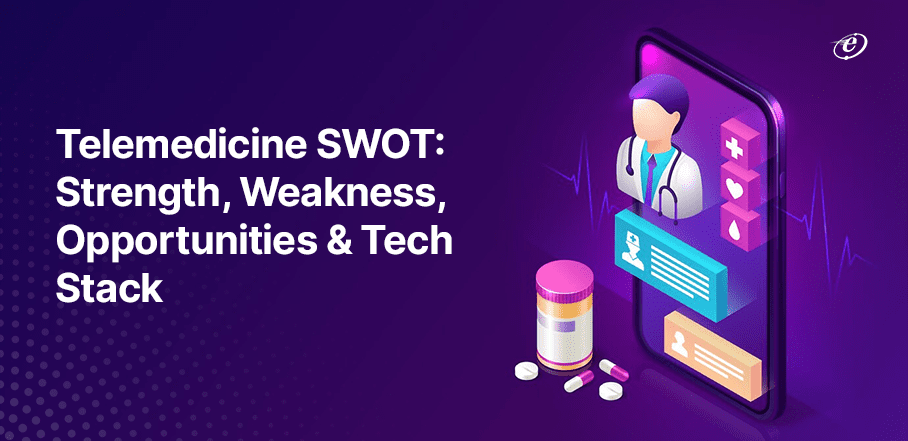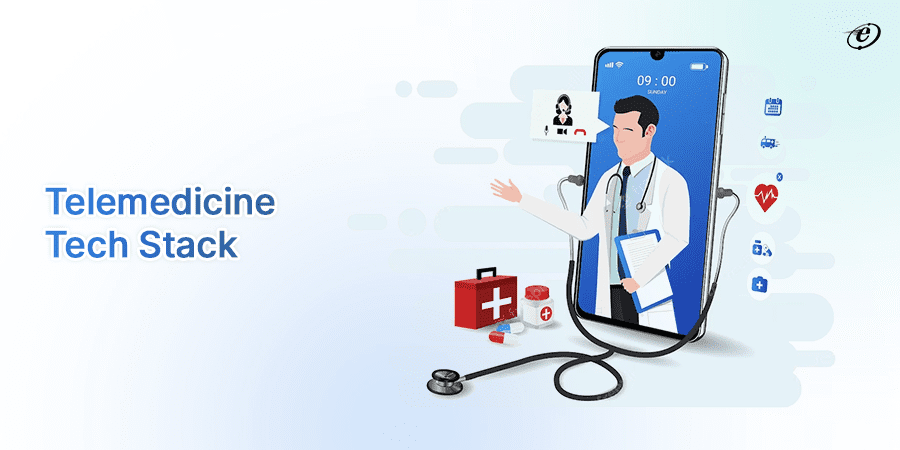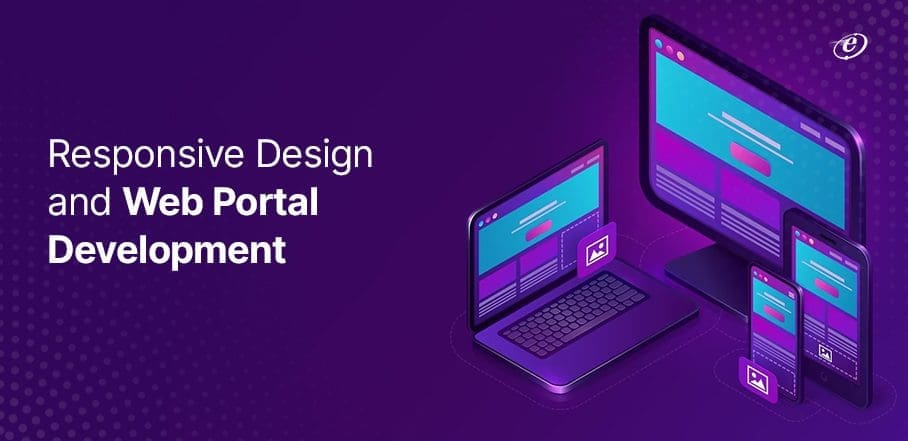
Telemedicine SWOT: Strength, Weakness, Opportunities & Tech Stack
In Chile, among the more developed economies in South America, 57.8% of physicians operate out of the central region, causing patients to travel long distances to access healthcare. This is a textbook example of how telemedicine swot can significantly improve people’s lives.
But even in the USA, where friendlier geography and a more even distribution of healthcare services exist, remote healthcare is becoming popular. For instance, over 75% of American hospitals use video and other technology to connect remotely with their patients.
While Covid-19 hastened the adoption of telemedicine, remote healthcare was on the rise even before that because of a growing elderly population in developed countries, rise in diagnoses and volume of chronic illnesses, shortage of medical personnel, and of course, better technology.
Together, these factors will drive the global telemedicine market to a growth rate of 22.4% CAGR between 2021 and 2028, as per Grand View Research.
As a custom web application development company, we’ve helped several clients become part of this growth by turning their telemedicine ideas into feasible POCs and profitable products.
Apart from helping us understand what goes into making such an idea successful, it also made us aware of the challenges and opportunities faced by any telemedicine or telehealth venture.
In this post, we throw more light on these factors while also highlighting the benefits of telemedicine and the kind of tech stack we’ve used to build such solutions.
Also read: Telemedicine App Development Cost
What is Telemedicine?

Telemedicine is a way of using technology to remotely provide healthcare services such as diagnosis, treatment, and disease prevention.
With telemedicine services, patients can choose between their regular healthcare provider or dedicated telemedicine companies such as Amwell.
And while this consultation mainly happens through technology like remote patient monitoring and videoconferencing, tools such as phone calls, emails, text or IM apps, and even health portals can be used. However, the latter are mostly used to deliver telehealth, which brings us to the difference between telemedicine and telehealth.
Telemedicine vs Telehealth

Although interchangeably used, there is a difference between telemedicine and telehealth. While telemedicine refers to receiving clinical or medical care remotely, telehealth is a more holistic term that covers all health services delivered using telecommunications technology.
Benefits of Telemedicine

-
Reach a Wider Audience Safely
Telemedicine makes healthcare accessible to more people across the geographical divide. While initially conceived as a way to deliver healthcare to remote parts of large, wealthy countries like the USA, telemedicne has become instrumental in spreading the reach of basic healthcare services in developing countries.
Telemedicine also offers a feasible, scalable, and safe solution to providing healthcare to a rapidly ageing population. Elderly patients suffering from mobility or disability issues can easily and instantly access healthcare services via telemedicine.
-
Improve Time-Efficiency
Since ‘remote’ is at the heart of telemedicine, each stakeholder in the telemedicine process can make the most of their effort and time. For instance, healthcare staff are among the most overworked professionals and deal with a lot of pressure to boot.
But with telemedicine, they can have better control over their work hours, improve efficiency, and manage stress better. Similarly, the effort and time spent commuting to and from a healthcare facility can be spent in more rewarding and relaxing activities for patients.
-
Cut Costs
At close to $3 trillion annually, the USA is by far the heaviest healthcare spender in the world. But the more shocking part is that up to 25% of that figure is avoidable. While a considerable chunk of this is caused by late diagnosis of certain diseases, administrative overheads are a significant contributor too.
But with telemedicine, not only will patients get accurate diagnoses quicker, but hospitals can save a lot of money with digitisation and data-informed decision-making.
There’s also the matter of clinics and hospitals being able to accommodate more patients because of telemedicine’s scalability and versatility, thus helping generate more revenue.
-
Make Keeping Medical Records Easier
Keeping up-to-date records safely and securely is a significant draw on any healthcare provider’s resources. These records are often huge and include a patient’s medical history, diagnoses reports, and medical prescriptions, among others.
With telemedicine, record-keeping not only becomes easy, but it’s also easier to retrieve the required information quickly and without hassle. And with the patient’s consent, the healthcare provider can also seamlessly share this information with the concerned parties.
Doing away with the bureaucratic nightmare of paper medical records using telemedicine benefits both the patient (via quicker healthcare delivery) and the healthcare provider (more productive resource allocation).
-
Better Patient Engagement
The consumers of today have almost nothing in common with the consumers of 20 or 30 years ago. The modern consumer expects more and desires a degree of personalisation in all experiences.
Today’s healthcare seeker is no different as they live and work in a digital world, leading to expectations of different and personalised kinds of healthcare experiences.
Telemedicine can help providers meet these expectations by enabling patients to get in touch with their doctors more frequently and in a more convenient, personalised way.
These kinds of interactions will inevitably lead to more comprehensive patient information and a stronger doctor-patient bond, sowing the seeds for greater patient engagement and satisfaction.
-
Improved Treatment
In all the talk about reducing costs and increasing the reach of healthcare, it’s easy to miss the fact that telemedicine can also improve the quality of treatment. For instance, it enables doctors and other staff to follow up regularly with patients to make sure everything’s alright.
Whether they’re keeping tabs on the patient’s vitals using a remote monitoring system or answering questions via videoconferencing/IM, telemedicine’s incremental improvements can bring about drastic changes to treatment outcomes.

Challenges in Telemedicine

-
Data Storage and Security
Since telemedicine involves dealing with sensitive patient information, data security is of paramount concern. Providers have to invest in and adopt all tools and protocols that help ensure their patient’s data safety.
This, however, is only half the battle as healthcare providers also have to regularly audit their security measures and keep an eye out for new vulnerabilities after software updates.
-
HIPAA and Other Regulatory Compliances
The Health Insurance Portability and Accountability Act, abbreviated as HIPAA, is among the most prominent risks of telemedicine faced by healthcare providers and entrepreneurs.
The act’s purpose is to safeguard patient data from theft and misuse, especially when exchanged between different parties. Not adhering to this law can result in fines of up to $1.5 million per year.
This is why it’s essential to hire dedicated developer or vendor that knows how to ensure your telemedicine app complies with HIPAA.
For instance, each telemedicine application we’ve built offers credential-based level access, automatic log-offs and OTP-based log-on, regular data backup, and AES 128 bit and SHA 256 data encryption.
-
Stakeholder Training
As with any solution with technology at its core, telemedicine requires regular training and retraining of all stakeholders. Apart from eating into the valuable time of healthcare workers, this can also lead to expenses in equipment and licence purchases.
Future of Telemedicine Opportunities and Scope

-
Remote Chronic Disease Management
Thanks to improved diagnostics and the modern lifestyle, there has been a surge in the prevalence of chronic diseases. This is only expected to increase going forward, possibly becoming a choke point for healthcare service providers.
But chronic disease management is also a prime candidate for telemedicine software as it can be treated with regular remote consultations, thus saving the patient’s money and doctor’s time.
-
School-Based Telemedicine
Although seemingly a non-issue now, children often get ill during school hours. While some get treated by the school nurse, the parents have to pick up their children and visit a care centre in most cases.
Schools can, and many do, work around this by tying up with local doctors to offer telemedicine facilities for treating illnesses. This not only provides urgent and qualified care but also reassures parents of their children’s health.
-
Assisted Living Centre Support
Telemedicine has proven invaluable during Covid-19 in keeping people living in assisted care facilities away from hospitals and clinics. In several cases, telemedicine helped decide if a patient needed hospitalisation, especially during odd hours or when nearby hospitals were flush with Covid-19 patients.
And with the number of older people continuing to rise, telemedicine will play a vital role in making on-call and remote healthcare services available to those living in assisted care facilities, Covid-19 or otherwise.
-
Preventative Care
Preventative care services to nip mental and physiological health problems in the bud are quickly gaining ground today. Whether it’s counselling or following up on prescribed treatments, telemedicine can become a valuable way of connecting healthcare providers with patients to get the necessary support.
Telemedicine Tech Stack

Now that we’ve covered telemedicine’s strengths, challenges, and opportunities, it’s time to look at the tech stack we offer across our hire dedicated developer services.
Telemedicine Programming Languages:
- Kotlin, Java (Android)
- Swift, Objective C (iOS)
- React Native, Xamarin (Hybrid)
Telemedicine Back-end Development:
- Programming language: .NET (our preferred choice), Node.js, Java, PHP
- Videoconferencing: RTMP, Twilio, WebRTC
- Chat: Twilio, Socket.io
- Database: MySQL
- APIs and frameworks: Stripe, EC2, S3
Telemedicine Tools:
- Search & filters: Elastic search
- Mailing: Elastic Emails
- SMS/Text messaging: WebRTC, Twilio, Google SMS, ClickSend
- Video calling: Twilio, Pubnub, Opentok, WebRTC
- Geolocation: Google Maps Platform
- Notifications: Firebase Cloud Messaging, Amazon SNS, GCM APN, Amazon Web Services
- Payment gateways: Stripe, RazorPay, PayPal

Takeaway
Wealth is no longer the only hurdle in getting access to quality healthcare. Several other externalities such as demographics, geography, and uncertainties such as this pandemic affect the reach of healthcare to those who require it the most.
Telemedicine is the perfect springboard to clear these hurdles as it can connect healthcare seekers and healthcare providers in a cost-effective, time-efficient, and scalable manner.
As a Frontend development company with experience in building telemedicine apps, we can help you figure out whether you need a mobile or web application, which features you should invest in, and the compliances your telemedicine app needs to meet.
Thank you for reading! If you liked this post, do subscribe to get informative posts about web and mobile development, data analytics, and eCommerce delivered to your inbox.



